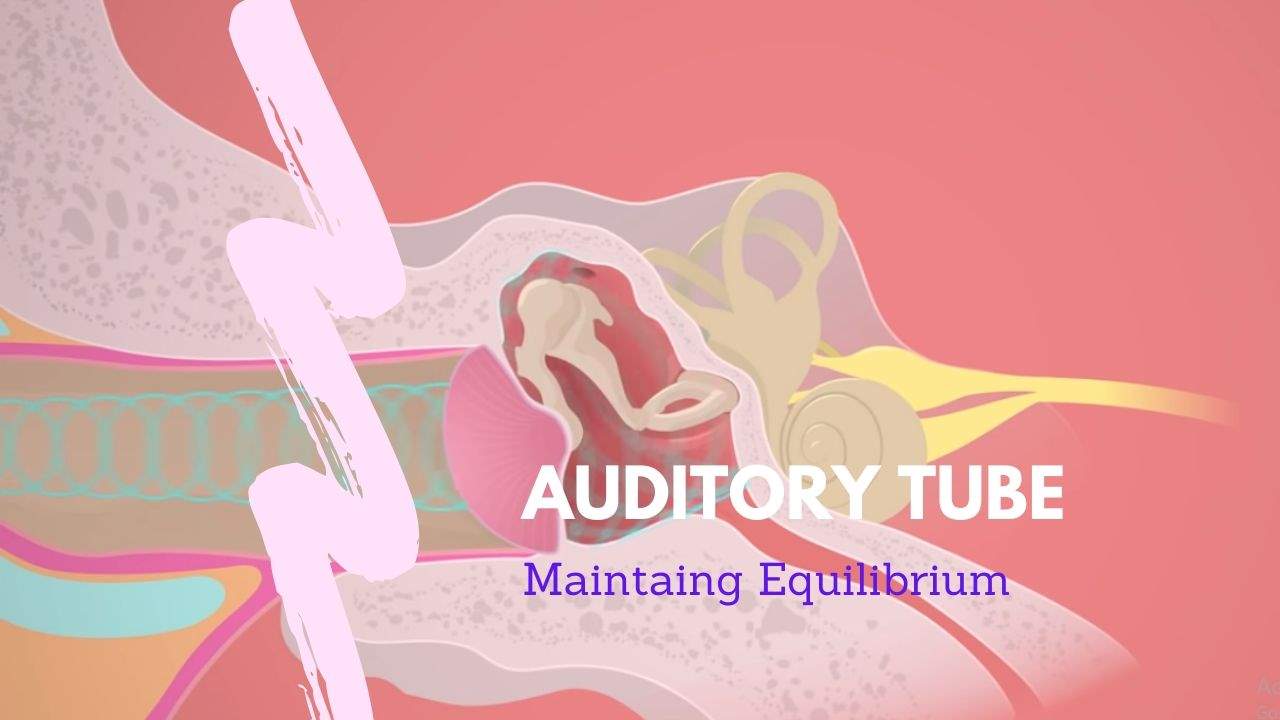Auditory tube
Pharyngotympanic tube / Eustachian tube
Auditory tube is the canal that connects the middle ear cavity with the lateral wall of the nasopharynx.
Features of Auditory Tube
Length:
Auditory Tube is about 4cm in length.
Direction:
Auditory tube is directed downwards, forwards and medially.
Lining epithelium of Auditory Tube:
It is lined by ciliated columnar epithelium as similar to that of the middle ear cavity & nasopharynx.
There are two parts of the auditory tube.
- Bony part of auditory tube
- Cartilaginous part of auditory tube
Bony Part of Auditory Tube:
It is about 12mm long.
The bony part of the auditory tube lies within the petrous part of the temporal bone up to its apex from where the cartilaginous part of the tube begins.
Relation of Bony part of auditory tube
- Superiorly canal for tensor tympani muscle is present.
- Medially carotid canal is present from where the internal carotid artery courses upward.
Cartilaginous part of auditory tube:
It is about 25mm in length.
It is formed by elastic cartilage.
Cartilaginous part of the auditory tube starts from the apex of the petrous part of the temporal bone and opens in the lateral wall of the nasopharynx.
Note:
There is the tubal elevation just above the opening of the auditory tube on the lateral wall of the nasopharynx which is produced by Tubal Tonsil.
Similarly, there is a depressed area like fossa behind the opening of the cartilaginous part of the auditory tube on the lateral wall of the nasopharynx.
This is called as Pharyngeal Recess or Fossa of Rosenmuller.
Clinical importance of Fossa of Resenmuller:
It is the major common site of origin of nasopharyngeal carcinoma.
Development of Auditory Tube:
Auditory Tube develops from 1st pharyngeal arch/ branchial arch (which is mesodermal in origin).
Function of auditory tube:
- It maintains the equilibrium of air pressure between both sides of the tympanic membrane (eardrum) ie. between the middle ear and external ear.
- It provides communication between the middle ear cavity (tympanic cavity) and nasopharynx.
How auditory tube maintains the equilibrium of air pressure?
Simply, an auditory tube maintains equilibrium by moving air in and out from nasopharynx to middle ear cavity or from the middle ear cavity to the nasopharynx.
For example,
When flying above in the airplane, the pressure decrease down in the external ear (below 760mmHg), but the middle ear pressure remains the same as 760 mm Hg.
Thus, relatively the pressure of the middle ear comes to become higher with respect to that of the external ear.
So, auditory tube open, expelling air out from middle ear cavity to the nasopharynx, thus lowering the air pressure of the middle ear making equal to that of the external ear.
If an auditory tube does not open due to some pathological condition, then pressure is not maintained between the external and middle ear, thus resulting in complications like ear pain, tearing of eardrum.
Moreover, it could also lead to a rupture of the oval window (which is covered by the secondary tympanic membrane) leading to a leak of fluid (perilymph) from the scala tympani of the membranous labyrinth of the inner ear into the middle ear cavity.
Clinical Anatomy Related to Auditory Tube:
Infections may pass from the throat to the middle ear through an auditory tube.
This is more common in children because of the following reasons.
1) The auditory tube is shorter in length (18mm) - half the length of adult length.
2) Similarly, the auditory tube is wider in diameter in the case of children.
3) Moreover, the auditory tube is more horizontal in direction. But in the case of adults, it is directed downwards, forwards & medially.
Inflammation of the auditory tube is often secondary to an attack of common cold, or of sore throat.
This causes pain in the ear which is made more serious during swallowing, due to the blockage of the auditory tube.
Pain is relieved by instillation of decongestant drops in the nose, which help to open the ostium (opening) of the tube.
The opening of the tube is commonly blocked in the children by enlargement of the tubal tonsil.
Because, as we know tubal tonsil is present just above the opening of the auditory tube in the lateral wall of the nasopharynx.
Thus, hypertrophy of the tubal tonsil may occlude the auditory tube leading to middle ear problems.
Otitis media:
It is the condition of accumulation of fluid in the middle ear cavity caused by viral or bacterial infection during respiratory infection which may have transmitted through the auditory tube to the middle ear cavity.

Comments (0)